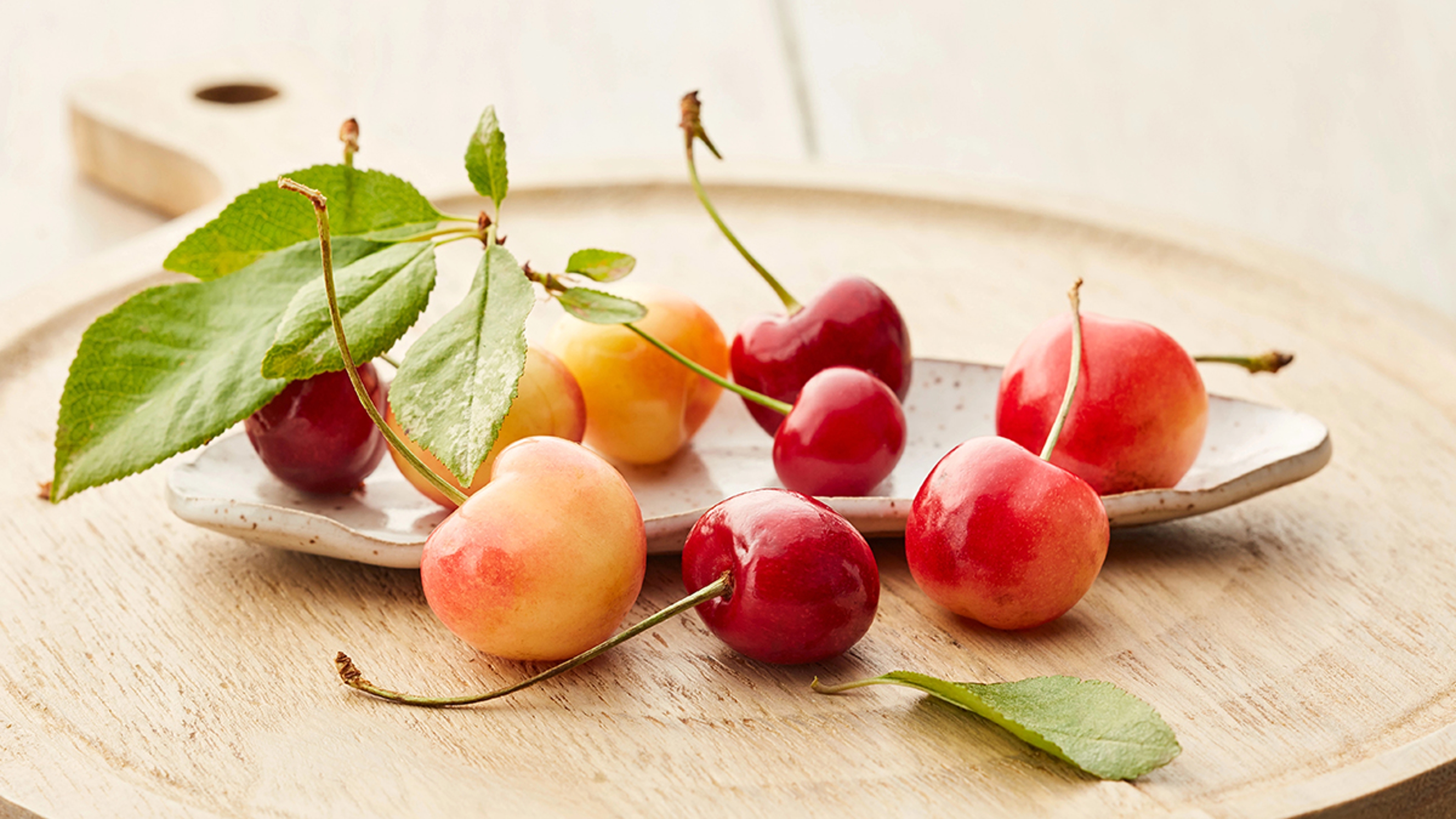10 Things You Didn't Know About Cherries
Find out how they became linked to slot machines, which kind is pickled, and more fun facts about this summertime fruit.
Jun 02, 2025
1. Cherries get lost in translation
The English word "cherry" derives from the French word “cherise." English speakers, hearing the word for the first time, misunderstood how it was spelled and assumed it was the plural for the fruit — which is why the terms “cherry” and “cherries” don't align in the two languages even to this day. (And darling, don't get us started on mon cheri....)
2. They play a huge role in a made-up historic story

Almost everyone knows the tale of a 6-year-old George Washington — the future first president of the United States — chopping down his father's cherry tree. When confronted, he famously admitted, “I cannot tell a lie…I did cut it with my hatchet,” causing his father to forgive him for his incredible honesty in the face of adversity. However, according to the Mount Vernon historians who run the George Washington museum, that iconic story is a fabrication, made up by Washington biographer Mason Locke Weems in 1800 to help bolster public opinion of Washington (who had recently died) and, of course, to help sell his book.
3. Their variety is astounding...
More than 1,000 varieties of cherries grow in the wild, but fewer than 10 are grown commercially to produce fruit. Two main types of cherries are produced in the United States: sweet cherries and tart or “sour” cherries, according to the USDA Agricultural Marketing Service. Most sweet cherries — such as the heart-shaped Bing, the large, bright-red Lambert, and the gold-toned Rainier — are grown in California, Washington, and Oregon. Tart cherries are mostly grown in Michigan and Wisconsin.
4. ...So is the amount we use
The average cherry pie contains more than 250 cherries.

5. Their iconography is steeped in meaning
The dark-red flesh of the fruit and its blood-colored juice are often associated with the human body — with the pit inside symbolizing new life or rebirth. In ancient Greek mythology, cherry trees contained the “elixir” that gave gods their immortality, while ancient Chinese lore said the magical Phoenix slept on a bed of cherry blossoms to attain everlasting life. In Buddhism, cherries represent fertility and femininity, since the mother of Buddha was said to be supported by a holy cherry tree as she gave birth.
6. One cherry is actually pickled
That's right! Maraschino cherries, the popular ice cream sundae topping and cocktail garnish, are pickled in a brine of saltwater before being dumped back into that famous red sugary syrup.
7. Not quite the forbidden fruit from the tree of knowledge, but close
Don't bother picking cherries from the picturesque cherry blossoms that emerge in Washington, D.C., every spring. Although incredibly beautiful to look at, these trees — which number in the thousands and were a gift to D.C. from the city of Tokyo in 1912 — don't produce fruit that you can eat. According to the National Parks Service, the only cherries you get from them are tiny, black, and bitter, with a giant pit in the center.

8. They can't be faked or replicated
From Popsicles to gelatin to candy to soda, there are actually more “cherry-flavored" foods in the marketplace than foods containing real cherries. And none of those “cherry-flavored" confections really taste like cherries. The reason, according to food historian and flavor expert Nadia Berenstein, is the combination of chemicals used to replicate cherry flavor artificially — ethyl acetate, ethyl benzoate, oil of persico, benzoic acid, glycerin, and alcohol (yum!). These were first developed in the late 19th century and were meant to copy the flavor of wild cherries and cherry liqueurs, like Maraschino liqueur, rather than fresh fruit. That's why you may notice the taste of bitter almond in most artificial cherry flavoring — it's there to mimic that heirloom flavor of a cherry pit, a taste you don't really get when eating fresh cherries.
9. Take a gamble on cherries
In the gambling world, cherries are king — especially on slot machines. The reason, according to “Professor Slots” Jon Friedl: When slot machines were first invented in the early 1900s, a number of cities quickly banned them. “To circumvent these new laws on cash-paying slot machines,” Friedl says, “manufacturers began turning their gambling devices into chewing gum dispensers.” Numbers were replaced with fruit symbols, and when you got three in a row, you won a piece of gum. Since cherry-flavored treats were most popular at the time, three cherries ultimately became the biggest — and most desired — win.

10. Their history dates back centuries
Cherry trees are thought to have originated in the fertile regions of Turkey and southwest Asia before quickly spreading around the globe as people recognized the fruit's deliciousness and versatility. Cultivated cherry trees grown specifically to produce fruit have been documented in ancient Rome as far back as 72 BC. And there are still living cherry trees that date almost as far back as that: At least three cherry trees thriving in Japan today are estimated to be more than 1,000 years old. The oldest — on the grounds of Jisso-ji Temple in the city of Hokuto in central Japan — is thought to be nearly 2,000 years old. It stands just over 30 feet tall and has a remarkably dense trunk that's approximately the same circumference.
.svg?q=70&width=384&auto=webp)











